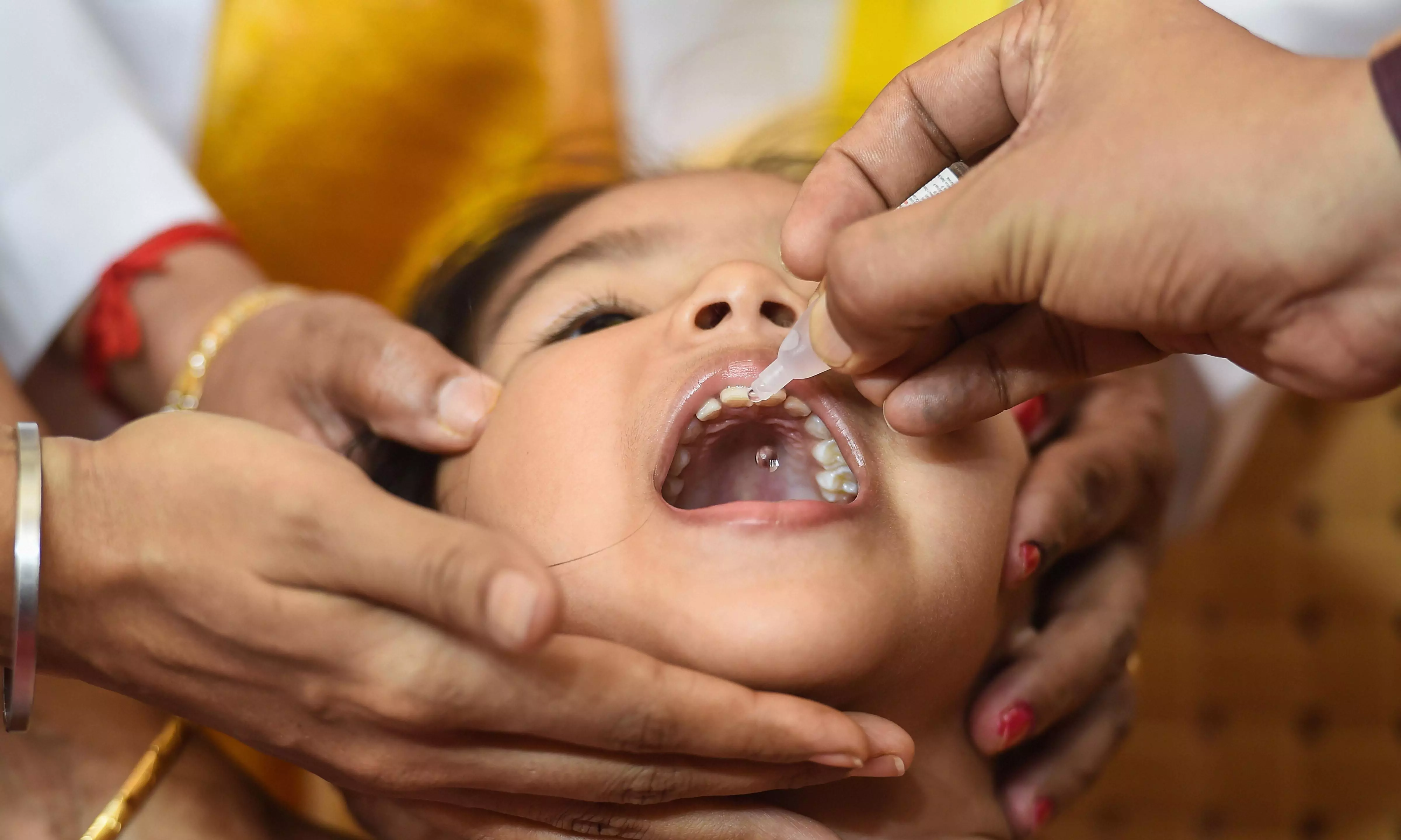Polio-Free but Not Risk-Free: The Ongoing Fight Against Polio

Polio targets children under five often leading to irreversible paralysis or even death in severe cases. (Photo: PTI)
Hyderabad: The recent polio case reported in Meghalaya, India, underscores the persistent threat of poliomyelitis and the importance of ongoing vigilance. Polio, a highly contagious viral disease transmitted primarily through the faecal-oral route, targets children under five, often leading to irreversible paralysis or even death in severe cases. Despite decades of progress and India’s polio-free status, the disease remains a global health risk, and India must maintain high immunization rates to prevent a resurgence.
Dr Nitin Chawla, Chief of Pediatrics, KIMS Hospital, Hyderabad remarks, “India’s polio-free status is a testament to what we can achieve with commitment and collective action. But the fight against polio isn’t just about what we’ve accomplished—it’s about keeping up the momentum. Our past success must serve as a reminder that constant vigilance through vaccination is the only way to prevent a resurgence.”
India’s success story—12 years of being polio-free—has been an extraordinary public health achievement, facilitated by massive immunization drives. According to WHO, in lieu of Polio eradication in India, around 1 billion doses of polio vaccine were administered annually to 172 million children over the course of four years leading up to the last case. Yet, recent incidents of polio resurfacing in parts of the world raise a crucial concern: India cannot afford to let its guard down.
Dr Nitin Chawla emphasizes, “Public awareness is key to ensuring that every child gets vaccinated. Educating parents about the importance of routine immunization creates a strong defence against polio. Communities must remain informed and engaged in the fight to keep polio away for good.”
The Indian Academy of Paediatrics Advisory Committee on Vaccines and Immunization Practices (IAP ACVIP) stresses the need to strictly follow the recommended vaccination schedule. This includes a birth dose of oral polio vaccine (OPV), an inactivated polio vaccine (IPV) at 6, 10, and 14 weeks, followed by boosters at 16-18 months and again at 4-6 years. Adherence to this schedule is critical to maintaining individual and herd immunity.
Dr Nithin Chawla adds, “Eradicating polio requires constant vigilance. The Inactivated Polio Vaccine (IPV), when given as early as 6 weeks, is essential for building a strong defence against the virus. By maintaining routine immunizations from an early age, we ensure the progress we’ve made is protected, and future generations are safeguarded from this preventable disease.”
On World Polio Day, the message is clear: vaccination is the key to preventing a resurgence. By maintaining high immunization rates and supporting public health initiatives, India can continue its fight against polio and protect future generations from this preventable disease. The global goal is within reach, but only if every nation—including India—remains steadfast in its commitment to eradicating polio once and for all.
Dr Nitin Chawla, Chief of Pediatrics, KIMS Hospital, Hyderabad.
( Source : Guest Post )
Next Story

